How modern payment technologies are used by catering enterprises around the world
To get started, consider what McDonald's does in the United States, where its activities face several factors at once:
- The growing protests of catering workers. They require a minimum wage of at least $ 15 per hour.
- Competitive pressure from smaller, but more agile enterprises (for example, Starbucks, Domino's, Taco Bell), which are already actively using digital technologies in customer service.
- The tangible drop in the company's profits caused by the previous two points. Over 4 years, the number of customers in this network fell by a total of 10.4%.
McDonald's first vending machine appeared in Boston at the end of January this year. The device performs part of the functions of the maintenance personnel - it distributes free food (though only to those who have Twitter). In order to get a free “Big Mac”, it is enough to retweet messages from this machine, with an offer to try the new “Big Mac”.

Is it really a “brave new world”, where every time you can get a hamburger for a tweet and be full all the time? No, it’s just an advertising company, but it allowed to stand out from competitors.
“It's just a fun way to be modern and progressive,” said Vince Spadea, spokeswoman for McDonald's Owners Cooperative. “I think we will see people in line for such a machine.”
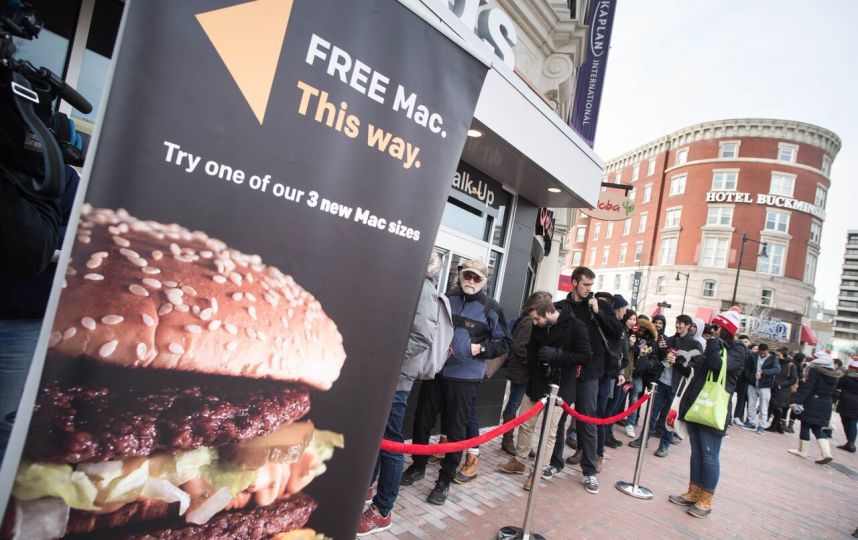
At the same time, Vince Spadea denies rumors that this is preparation for replacing waiters with robots and speaks only of a marketing step.
McDonald's focuses on other technologies that should make their business more profitable by the end of 2018: the development of self-service kiosks, digital interactive menus and even online table reservations.
Other fast food enterprises
Colonel Sanders, who specializes in fried chicken, is not doing well in America . Over the past 14 years, the KFC chain has lost 1,200 out of 5,472 restaurants in the United States. There is a need for urgent action, and since 2015, a complete reorganization has been carried out with a menu update, modern advertising targeted at a young YouTube audience is coming out. Digital technologies are actively used in customer service. For example, in the German city of Munich, the KFC network offered customers digital trays that allow you to connect a smartphone and use the wide screen without fear of getting your device dirty. In the US, you can pay in KFC using the Apple Pay payment system.
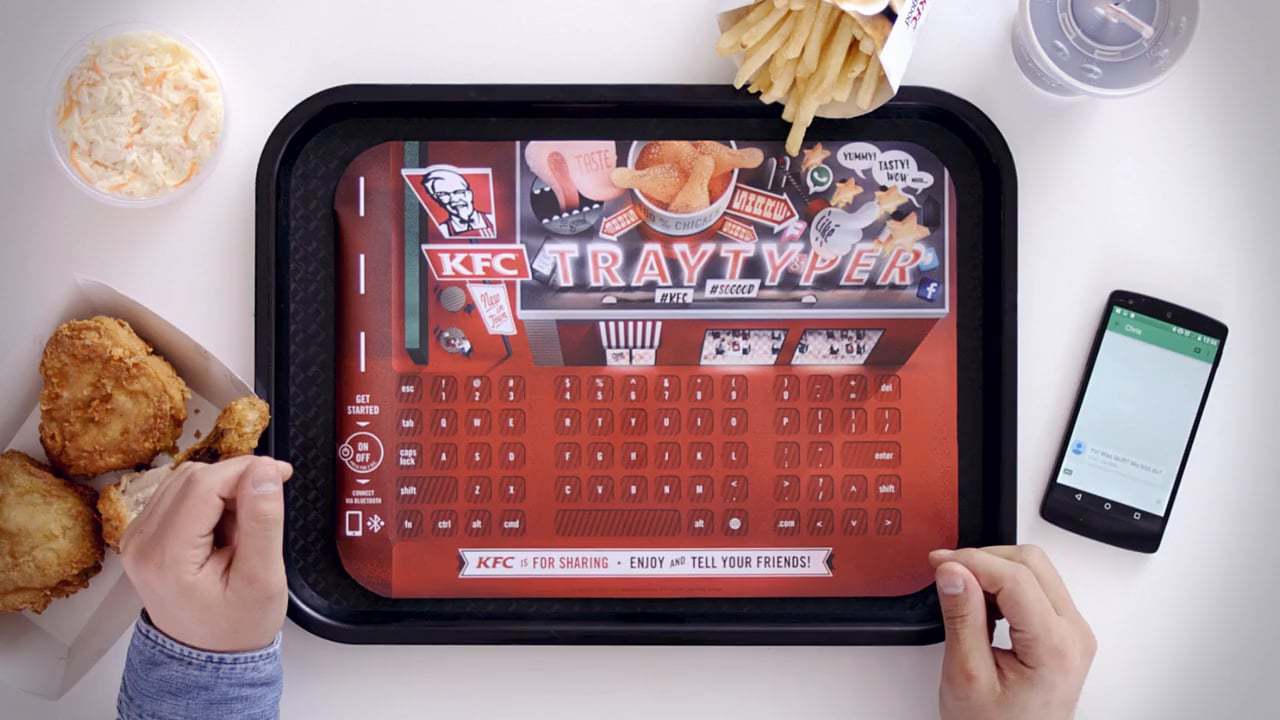
Noticeable growththere is only in the Chinese segment of KFC - there they have tens of millions of customers, at least a third of which are paid using mobile devices. In China, you can use the mobile app to book a table and food in advance while you are still walking to the KFC restaurant.
Starbucks, Domino's and Taco Bell have already been mentioned above.
Starbucks has long and successfully used loyalty cards. The total amount of user funds that are stored on loyalty cards and accounts of a mobile application: $ 1.2 billion, which is more than customer deposits in some large banks. Their loyalty program has been expanded beyond catering, and “stars” are awarded for purchases of various goods in stores related to Starbucks.
And now Starbucks points, which are credited to loyalty cards, can also be spent using the mobile application. Using the same application (available on the App Store and for Android), your order is paid, tracked and booked. The program also tells you how to get to the nearest Starbucks establishment. Restaurant and coffee shop owners know exactly what consumers want: according to surveys, 77% of Americans between the ages of 18 and 34 want to pay for their orders with them using mobile devices. And now, through the Starbucks mobile app, 22% of purchases are made, 6 million Americans make an order in this coffeehouse every month in this way. And on the company's website there is a personal account, where you can watch your balance and even transfer money between different loyalty cards.
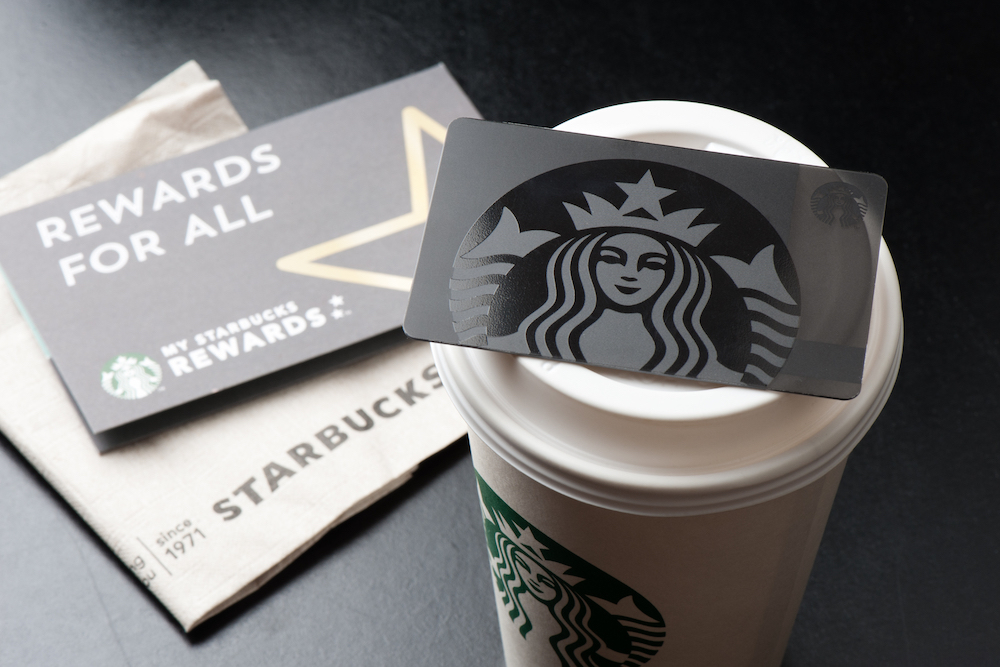
Domino's are becoming increasingly popular in Europe. Their online sales market in the Netherlands grew by 44%, and in Belgium by 125% for the year. In the Netherlands, 92% of orders are made online, and pizza using special applications can be ordered through Apple's smart watches or a GPS driver. Payment is made by credit card, distributed in the Netherlands by the Bancontact mobile payment application, as well as through PayPal.
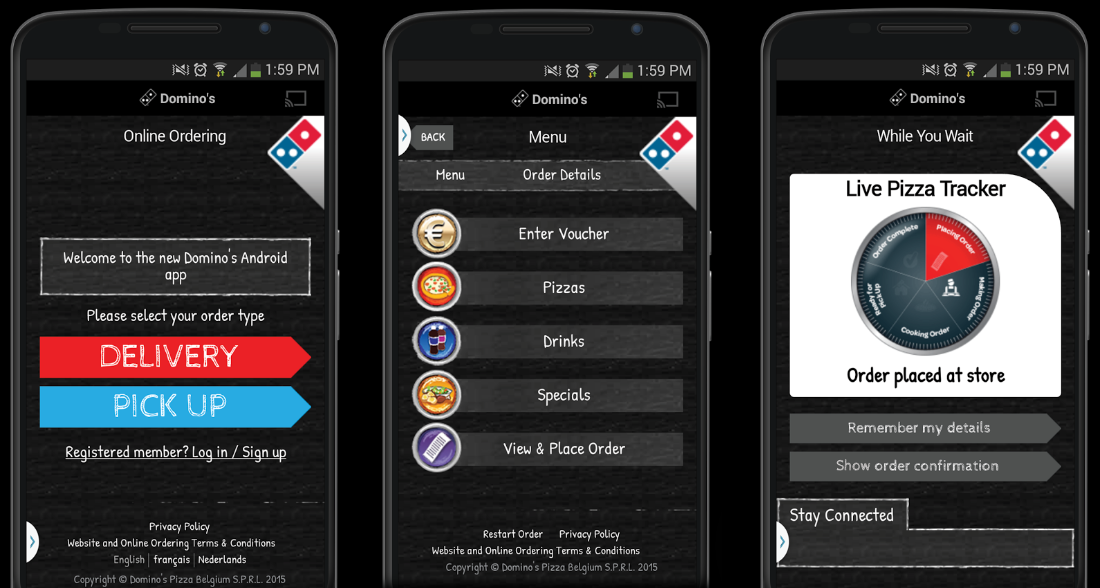
Taco Bell offerstheir customers a mobile application for the App Store and for Android, which allows you to both make and pay for the order, as well as request home delivery. The application shows the nearest Taco Bell establishment on a city map and allows you to give cooks a request to prepare your order while you are still on the go.
And the sandwich maker Subway combines the possibility of paying with a loyalty card in its mobile application, Burger King allows you to use your smartphone to pay for your hamburger. Catering chains Pizza Hut, Chipotle, Chick-Fil-A, Tim Hortons, Dunkin Donuts are not far behind: they also have mobile applications with similar functionality. However, new payment technologies are being actively mastered not only by fast food enterprises, but also by restaurants and coffee houses.
Coffee houses, restaurants and drinking establishments using new technologies
The Wagamama restaurant chain has begun testing MasterPass technology from Mastercard for contactless payment of the order. The new application for PayPal provides an opportunity in the United States to pay for your lunch in advance, in one of the 2000 restaurants included in this program. Chain stores in China already use biometrics, allowing you to make a payment only by showing your face and hands (or rather, the capillary pattern of the bottom of the orbit and the papillary pattern of fingers).
And we will not forget about those who come to miss a glass of beer in their favorite pub in the evening. These customers also use digital gadgets, like everyone else.
Drinking establishments also did not stand aside.
There are many applications that allow you to pay for food, taxi and even a hotel room with your mobile phone. And the first application for visitors to bars and clubs was the Rooam program , which you can pay for a drink without having to remove your wallet. Rooam also shows events in nearby bars, making it easier to build a route from one pub to another.
And in one of the bars in London they installed a fully automated system: by attaching a smartphone to the glass display of the device with a tap, you can pay a pint or two of beer, which immediately starts pouring into the mug after the approval of the operation. The technology has significantly reduced the queue, and it is expected that it will also find application during concerts and sports events.
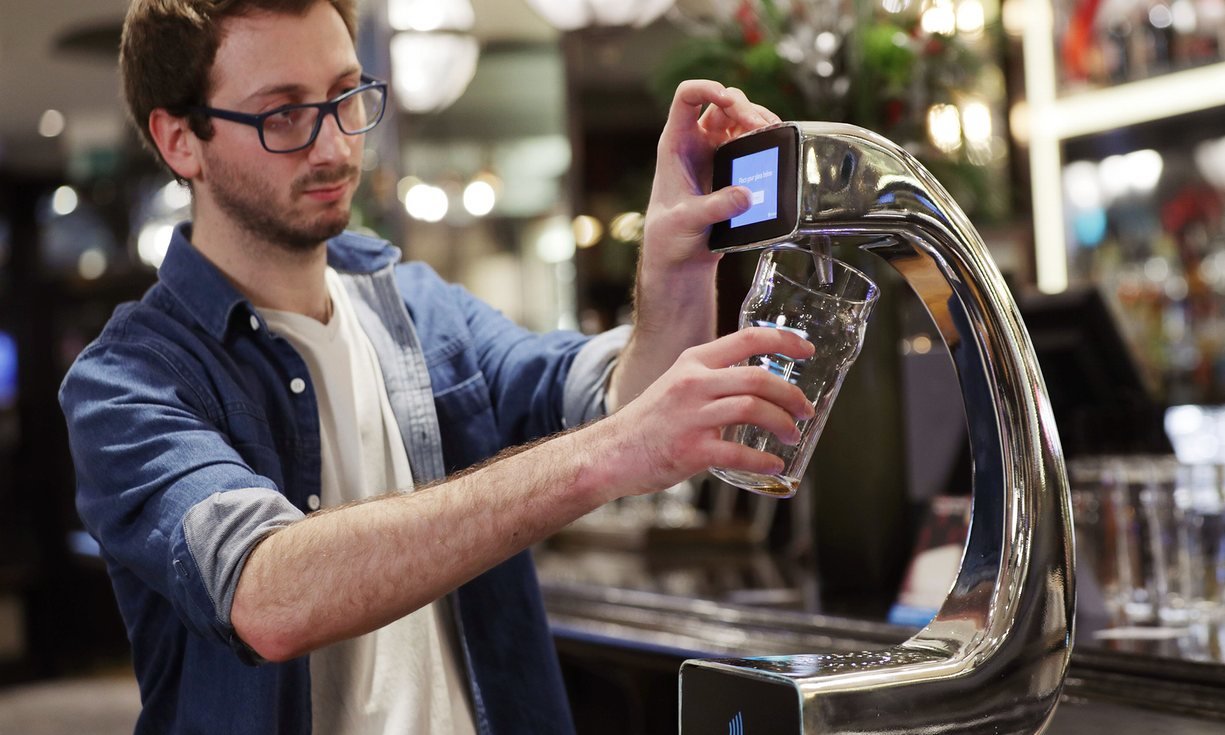
And another interesting undertaking was jointly organized by twelve bars in New York: creating an application that allows you to unite drinking buddies through a social network. Previously, customers download the application and connect their financial information to it. Then, any of the participants can configure their options, for example, “get up and leave”, and the payment is debited from his card automatically, set the account to be divided between the participants, and even send a drink to a friend through the virtual application, which the restaurant waiter will immediately bring him.
It is difficult to say which of these innovations will take root, and which will remain experiments. One thing is certain: the competition of public catering enterprises and the free exchange of ideas on the use of digital technologies in this area are only beneficial for consumers. The average waiting time in the queue is reduced, the level of service is increased, and loyalty programs become more convenient.

